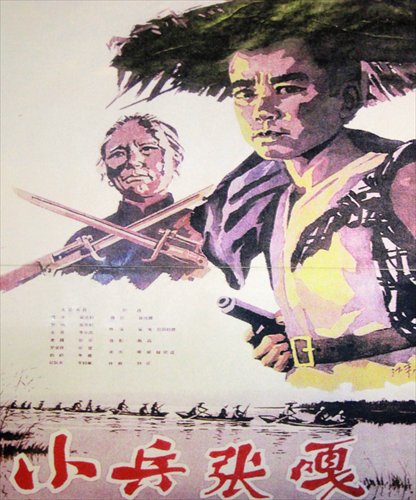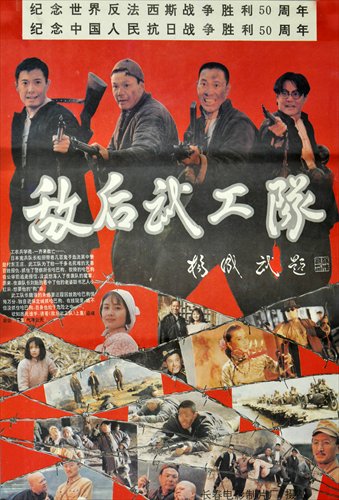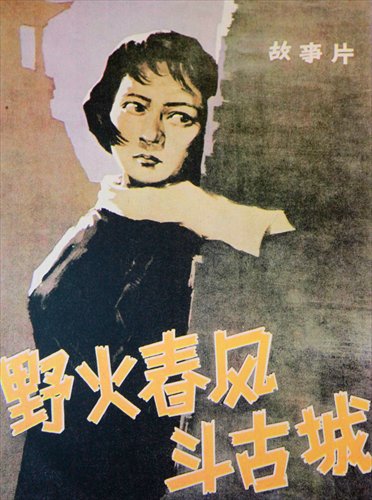Local literature
Regional writing has a long way to go to catch up to past masters



From Top: Film posters for Soldier Boy Zhang Ga, The Armed Team behind Enemy Lines, and Struggles in Ancient City Photos: IC
As a place which has generated many famous writers, North China's Hebei Province has been a little overlooked when it comes to literature achievements in recent years. Compared to other regions such as Shaanxi and Henan which have been viewed as strongholds for many famous domestic writers such as Jia Pingwa, Chen Zhongshi and Liu Zhenyun, Hebei has been so low-profile in recent decades that many people, even some professional literature critics, have neglected the fact that the place has traditionally been a fertile region for writers and their works.
This situation looks to be changing somewhat. In August three Hebei writers, Hu Xuewen, Zhang Chu and Da Jie, collectively won the Luxun Literature Prize and the 2014 Beijing International Book Fair chose Hebei as its guest province of honor, once again putting Hebei's writers and literature center stage for critics to examine its development over the past few decades. Meanwhile, critics have gone back to the table to discuss and examine the concept of "regional literature," a sometimes controversial term, to see if it is still conducive to the overall development of literature in China.
Glorious past
Hebei literature's glorious past is usually the dominate subject whenever it becomes the subject of conversation. From the poems of Cao Cao (155-220) to Snow in Summer by Guan Hanqing (1297-1307), or novels such as Dream of Red Mansions by Cao Xueqin (1715-63) and Soldier Boy Zhang Ga by Xu Guangyao (1925-present), numerous classical works of literature from Hebei writers have left significant marks on the history of China.
This glorious period lasted through to the 1950s and 1960s, two decades that are considered a prime period for local literature works from the region. During a period of time when nearly all literature and artistic works in China were related to the theme of revolution, in other words "red works," many literature works from Hebei writers became exemplary models for writers across the country, with some also being adapted to film.
Classic films that are still familiar names today like Soldier Boy Zhang Ga and Struggles in An Ancient City were based on novels from this period. "When we talk about Hebei literature today, early generation writers like Xu Guangyao played a very important role," said Li Jingze, vice chairman of the China Writers Association.
As one of the CPC's three strongholds during the War of Resistance against Japanese Aggression (1937-45), Hebei bore witness to numerous wartime occurrences that later became an ample resource for local writers. Quite a few famous red works from Hebei emerged during the later 1950s and 1960s, such as The Armed Team behind Enemy Lines by Feng Zhi, and The Five Heroes at the Langya Mountain by Shen Zhong.
"You could say that these red literature works laid the foundation for modernism in Hebei literature (a popular literature style in China since the 1980s) in later years," said Zhang Ling, chief editor of the Writers Publishing House.
Losing steam?
While Li recognizes the role Hebei has played in the overall development of China's modern day literature, he admits he is confused about the role of young local writers. "When I was asked to write a foreword for a book about the so-called 'Hebei Four' (Hu Xuewen, Liu Jiandong, Li Hao and Zhang Chu), it was a really difficult task since I couldn't make any sense in my article," Li said during a the summit for Heibei literature held Thursday at the National Museum of Modern Chinese Literature.
Li's confusion underlines a phenomenon that doesn't only exist when it comes to Hebei literature, but also literature from other regions in the country, especially areas with strong literature traditions.
While the names of the early generation of writers have been recorded in history, today's young writers have failed to make an impact, which has left a gaping hole in the development of regional literature.
When it comes to young writers from Hebei, after the 1980s during which time local writers such as Tie Ning (current chairperson of the China Writers Association) and Jia Dashan established their names across the country, few new writers have been able to establish a name for themselves. In fact, this year's Luxun Literature Prize has been the widest exposure local Hebei writers have received in years.
A similar situation exists for other regions, such as Shaanxi Province. While an early group of writers from the region born during the 1940s-50s became so famous they became known as the "Shaanxi Legion," the huge vacuum that has been left in their wake has yet to be filled by young writers today.
"Young writers in Shaanxi still need more time to catch up with established local names like Jia Pingwa and Chen Zhongshi," said Qiu Huadong, vice editor-in-chief of People's Literature, the flagship magazine on Chinese literature.
"However, the influence of the latter has been so overwhelming that it is very difficult for young writers to surpass them," Qiu told the Global Times.
Beyond borders
Although the use of regional literature to generalize the rise of a group of writers from a particular region has been a hot topic in recent years, the concept of "regional literature" was never really that accepted in China. "No writer from Hebei would want to be known as just a Hebei writer, their goal was to become an outstanding Chinese writer," said Li.
Of course scholars do acknowledge that commonalities exist among writers from the same region. Like how the new book The Village Ritou by Hebei writer Guan Renshan, is actually an epitome of many rural-related writings in the region. "The typical characteristic of Hebei writers' works is their focus on farmers and their land. It's an eternal subject for them," said Zhang.
Looking back at the past three decades, regional literature has actually contributed a lot to the overall development of literature in China. The writings of different regional writers reflect a vivid picture of local culture. For example, Wang Anyi in Shanghai, is widely known for her subtle depictions of local people's life as the city has changed over the years. Chi Zijian in Heilongjiang Province, writes about local cultural symbols in Northeast China like the Greater Khingan Mountains and the Mohe River.
Of course with the introduction of broad reaching media such as TV, the Internet and the prevalence of social media borders and regional flavors are blurring.
"With convenient transportation linking everyplace together, regional cultures will start to converge. So in the future Chinese literature will go beyond the regional level, with writers focusing more on the spirits and souls of modern people, just like the emergence of works about the middle class, or the beat generation in the US, similar works will also appear in China," Qiu predicts.
Newspaper headline: Regional writing has a long way to go to catch up to past masters